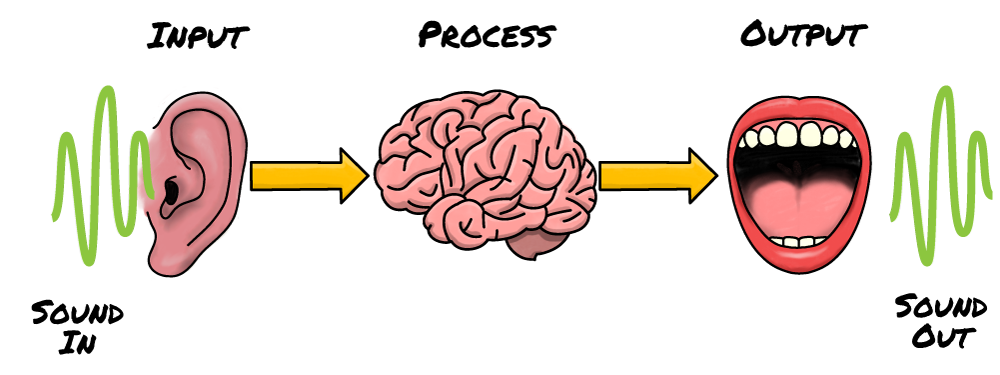Input–Process–Output in Humans

Humans receive messages from our senses, such as our skin, eyes, or ears. These are passed to our brain which decides how to react to them. We may choose to remember it, or we may choose a physical response using our muscles to speak a reply.
For example, if we touch something hot, our skin reports it to our brain; and our brain sends a message to our muscles to move our hand away.
Input–Process–Output in Computers

Computers work in a similar way: input devices, such as keyboards, mice, and webcams receive instructions. These are then passed to the central processing unit (CPU) which decides how to react. The results of the CPU's decision are stored in memory or passed to an output device.
For example, pressing a button on a game controller sends an instruction to the CPU. The CPU calculates new coordinates for a character, then sends the new graphics to the screen for us to see.
Input Devices
Input devices send instructions into the computer to be processed. They are usually inputs from the user (keyboard, mouse, microphone), but could also be from sensors monitoring surroundings.
Output Devices
Output devices return the results of processing out from the computer. They are usually messages to the user (sounds from speakers or graphics on a monitor), but could also be motors to move objects.